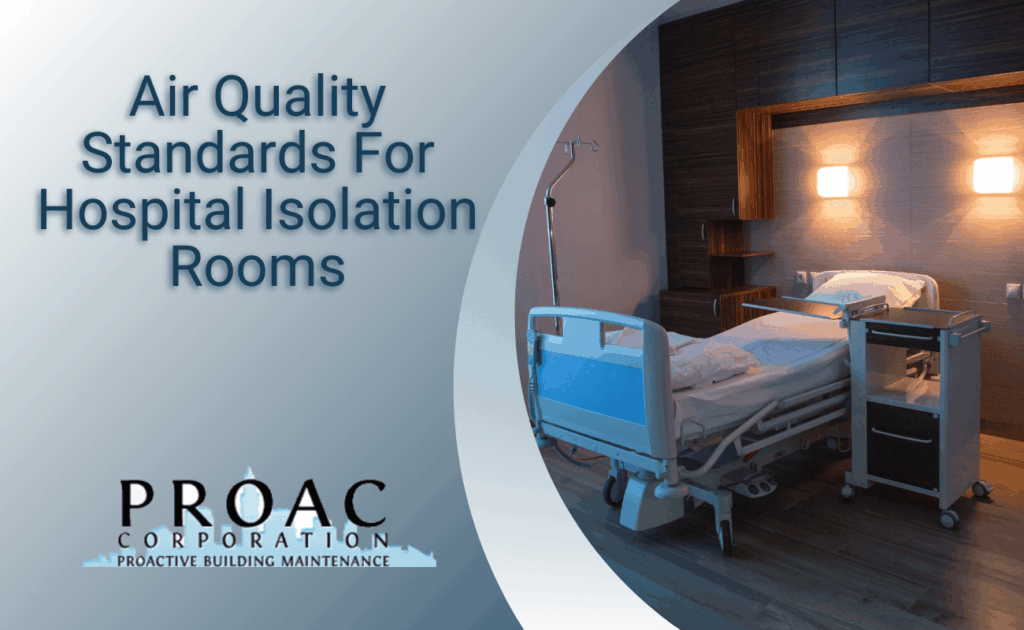Isolation rooms in hospitals are critical pieces of equipment that allow even the sickest patients to be treated, without risking exposure to other patients near them. Without isolation rooms, contagious diseases could spread like a wildfire and put everyone at risk. These rooms work by keeping all of the air that comes out of them away from the rest of the hospital’s air. Any air contaminants from the patients must be secured and exit the building properly. In order for this to work, isolation rooms have to follow strict air quality standards to ensure everyone’s safety. Let’s take a look at these standards to see if your isolation room is ready to start taking patients.
Air Changes Per Hour In Isolation Rooms
Air changes per hour (ACH) simply refers to how many times the air in the room is completely replaced in an hour. When the air is changed frequently in an isolation room, bacteria and viruses don’t have much time to grow and spread, and are quickly flushed out of the system. The standard for isolation rooms is to have at least 12 ACH for newer rooms, and at least 6 for existing ones. 6 is considered the acceptable minimum, especially for older rooms, but 12 is the goal to reach for newer construction.
Negative Pressure Differential Standard
The main point of an isolation room is to keep the contaminated air contained from the rest of the hospital air. This is done by negative pressure. Negative pressure happens when the air pressure inside of the room is lower than the air pressure outside of it, forcing the clean air into the isolation room, and not allowing the dirty air to get out. This is measured by having a reading of -0.01 inches of water gauge, which proves that air is being pushed from outside the room inside, and not the other way around.
Proper Exhaust For Isolation Rooms
No matter what kind of illness a patient in an isolation room is suffering from, the air from the room must be treated as if it could be infectious. In order to not let infectious air get into the main hospital ventilation system, the dirty air must either be pushed directly outside of the building, or put through a high-efficiency particulate air filter (HEPA). These filters can remove around 99.97% of particles, ensuring that any potential air hazards are blocked off from entering the surrounding rooms.
Standards For Temperature And Humidity
While the right temperature and humidity can certainly keep patients comfortable in isolation rooms, it also helps keep everyone safe. A temperature of 70–75°F and humidity around 30–60% are best to not only keep everyone comfortable, but this range is ideal to reduce the growth of bacteria, viruses, and mold, who prefer a warm and damp environment.
Isolation Rooms Must Have Continuous Monitoring
Because of how strict the guidelines for isolation rooms are, and for how risky a leak of contaminated air could be, it is important to have the air quality of the room under monitoring. Real-time monitoring lets you know before something turns into a problem, giving you the time to get a technician out before a breach occurs, and infection can spread throughout your hospital.
Handling Air Quality For Isolation Rooms Is A Lot Of Work. Let PROAC Take It Off Your Plate.
The importance of proper air quality for hospital isolation rooms cannot be overstated. Professional HVAC maintenance from PROAC can help you ensure the security of your isolation room, and make sure that everyone in your building is safe from a potential outbreak. We do air quality testing for hospitals, industrial dust removal, hospital duct cleaning, and a variety of other services across your entire hospital HVAC system. Whatever your hospital HVAC needs are, PROAC is the place to turn to. Contact us today to get a free quote.

